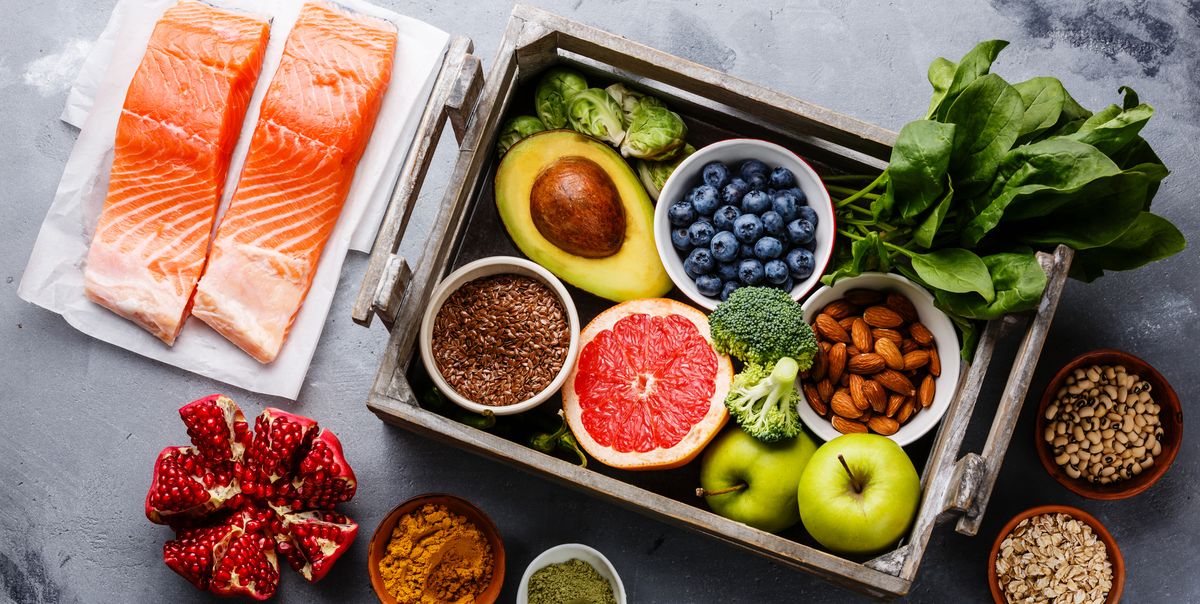The nutritionist should recommend foods included in the Paleolithic diet to avoid nutritional deficiencies and complications, such as calcium loss, kidney problems, mental confusion, and fainting.
Paleolithic diet: what it is, how it works, and what to eat
Foods to avoid
The following foods are not present in the Paleolithic diet:
Cereals and foods containing them: rice, wheat, oats, barley, quinoa, and corn;
Grains: beans, peanuts, soybeans, and all products such as tofu, peas, and lentils;
Sugars and any food or preparation that contains sugar, such as cookies, cakes, pasteurized juices, and soft drinks;
Milk and dairy products, such as cheeses, yogurts, sour cream, condensed milk, butter, and ice cream;
Processed and packaged foods;
Fatty meats such as bacon, bologna, sausage, turkey and chicken skin, ham, pepperoni, salami, canned meat, pork, and ribs;
Salt and foods containing it.Depending on the person, it is possible to adapt the Paleolithic diet, with meat purchased in supermarkets, olive and flaxseed oil, and flours from oilseeds, such as almond and flaxseed flour, for example. Know which foods are rich in carbohydrates.
Paleolithic diet menu
The following table provides an example of a 3-day paleo diet menu:
Meal Day 1 Day 2 Day 3
Breakfast Sugar-free coffee + 2 scrambled eggs with diced tomato and onion + 1 apple Sugar-free coffee with natural almond milk + spinach omelet + 2 slices of avocado + 1 orange Sugar-free coffee with natural coconut milk + salad of fruits
Morning snack one handful of dried fruit 30 grams of coconut pulp Avocado smoothie with natural almond milk + 1 tablespoon of chia seeds
Lunch/Dinner 150 g meat + chard + tomato + grated carrots and beetroot + 1 drizzle of oil + 1 tangerine 150 grams of salmon accompanied by sauteed asparagus in olive oil + 1 pear Zucchini pasta with 150 grams of ground beef with sauce of natural tomato + raw salad seasoned with olive oil + 1/2 cup of chopped strawberries
Afternoon Snack 1 roasted banana with one teaspoon of chia seeds Carrot and celery sticks with homemade guacamole one boiled egg + 2 medium peaches
The quantities on the menu vary according to age, sex, physical activity, and whether the person has an associated disease or not, so it is important to go to the nutritionist so that a complete evaluation can be carried out and the most appropriate nutritional plan established, according to your needs.
It is important to remember that before starting any diet, it is necessary to speak with the doctor and nutritionist to assess health and receive specific guidance for each case. In addition, drinking plenty of water and practicing regular physical activity are attitudes that help lose weight and prevent disease.
Is the vegan diet compatible with the paleo diet?
It is perfectly feasible to go on a vegan diet and follow a paleo lifestyle. Indeed, the more strict and less flexible followers of the paleo diet do not eat vegetables and cereals, unlike following a vegan diet, but as tenths, it is more important in the paleo diet is what you want to eat, them ultra-processed.
Is the ketogenic diet compatible with the paleo diet?
As in the previous case, a ketogenic diet can be followed within the framework of the paleo lifestyle. A ketogenic diet consists of reducing the consumption of carbohydrates by lowering 50 grams daily. Therefore, you can perfectly follow a paleo diet and reduce your carbohydrate intake and increase your intake of protein and fat as a result.
Are the paleo diet and “Realfooding” es lo Mismo?
The paleo diet and the «Realfooding» movement share many points in common and luck against the same great enemy, the ultra-processed ones. Both proposals define the importance of eating foods and not ultra-processed edible products and, in their main part, are perfectly compatible models.
This type of dietary pattern had had its peak for about ten years now when it became fashionable as a method of slimming.
However, this way of life and food has been studied as a healthy diet model to prevent diseases such as diabetes, heart disease, and body weight.
Studying the food behavior of different civilizations and the differences in the diet of some and other populations, we can relate health and illness with food habits.
Well, the paleo diet is not another thing that is a healthy way of eating, that does not require certain unhealthy foods and bases consumption on those that we know as preventatives.
Pio name created some confusion (in many cases, they spoke of living as in the Paleolithic, like troglodytes), the diet does not consist of eating freshly hunted meat and not being able to consume current crops, but in basing the diet on food natural, unprocessed, unadulterated, with very simple and traditional cooking.
Paleo diet what foods should you eat
Paleolithic diet: menu
Below we show you a weekly Paleolithic diet menu to try and get an idea of the structure of the diet. You could change the dishes for similar foods, and you would have the same effect.
Breakfast 1 banana one handful of walnuts
Cherries Lunch
Food Salad with lettuce, tomato, onion, pepper, and olives Roast chicken
Snack 1 portion of turkey
Scrambled mushroom and prawn Gazpacho dinner
In the following example of the weekly Paleo diet, we include dairy foods since the variants of the Paleolithic diet can be dairy-free or with these foods present. In this case, they are included in the diet.
A paleolithic diet with dairy and yogurt:
Breakfast 1 yogurt with strawberries
Lunch 1 portion of cheese
Food Lentils with vegetables Baked hake
Snack 1 tortilla
Dinner Sautéed vegetables with veal and almonds one peach
Main characteristics of a paleo diet
The Paleolithic diet consists of consuming little processed foods based on natural foods.
The main features are:
Consumption of vegetables (greens, vegetables, legumes, fruits, and nuts).
Eliminate processed products rich in salt and additives.
Eliminate sugary foods.
Cooked traditionally.
Includes protein foods (It does not have to be the main source of food).What foods should you avoid?
There are different versions of this diet; cereals, legumes and dairy are usually avoided. However, some versions admit one or other foods; below is a list of foods that are usually avoided:
Bread
Pasta (macaroni, noodles, spaghetti ...)
Rice
Oatmeal
Corn
Quinoa
Flours
Rye
Chickpeas
bean
Lentils
Green peas
Soy
Broad beans
Milk
Yogurt
Cheese
Cream
ButterWhat foods should you eat?
The most suitable and recommended foods to carry out the Paleo Diet are:
Vegetables and salads
Fresh fruits
Nuts
Healthy protein
Lean meat
White and bluefish and shellfish
Eggs




